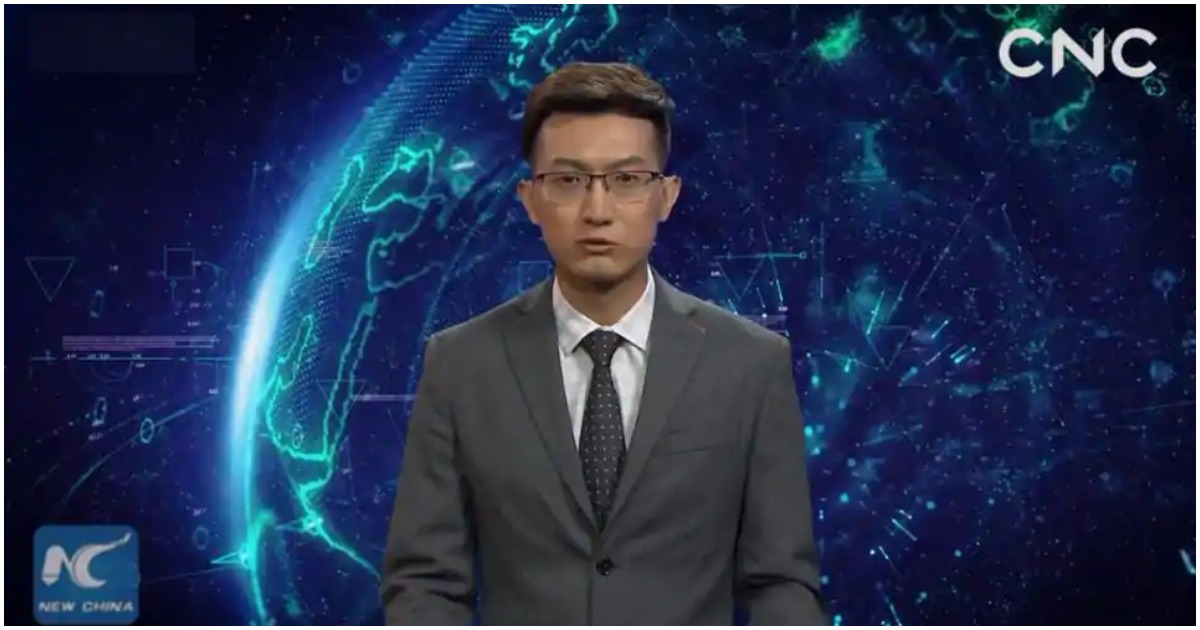It’s the 21st century, and robots aren’t just taking away back-office jobs that require repetition and number crunching — they are already taking away public-facing and creative jobs as well.
China has just unveiled what it calls the world’s first AI news anchor. China’s state news agency Xinhua today greeted users with a digital representation of a regular news anchor, who read out the news just like his real-life counterpart. “Not only can I accompany you 24 hours a day, 365 days a year. I can be endlessly copied and present at different scenes to bring you the news,” the AI anchor said in Chinese.
The anchor is developed jointly by Xinhua and Chinese search engine Sogou, and is designed to look and sound like the real anchor it is modeled on. Machine learning techniques were used to simulate the voice, facial movements, and gestures of the real-life broadcaster, and the news agency claims that this creates a “a lifelike image instead of a cold robot.”
The AI anchor, though, simply reads out a script that’s fed into its systems — it can’t come up with the news on its own. But the AI attemps to add facial movements and emphases of its own, making it seem fairly realistic. This this English language version shared by Xinhua, the anchor seems moves his shoulders, moves his eyebrows, and reads out a script without sounding too robotic.
The advantages of having an AI anchor are obvious — unlike their human counterparts, an AI anchor can work 24 hours a day without breaks, and will never stumble over their words or miss their cues. Broadcasters can also make significant savings if they are to be introduced en masse — an AI anchor is essentially a software program, and doesn’t need a real studio, lighting, make up teams, or cameras to run.
But while the AI anchor can read news, it only speaks out text that’s fed to it, which would mean that it might not be as effective during breaking news situations, and also would be unable to conduct interviews of its own. And even though it’s built based on a real-life anchor, it might have trouble reacting to completely new news situations — it’s hard to imagine an AI anchor bringing in the required gravitas for major world events, such as reporting live on the September 11 attacks.
While the AI anchors likely won’t completely replace real anchors anytime soon, they certainly appear to have taken the first step towards that direction. And if people thought training their replacements was hard during corporate resizings, imagine what it would be like for news anchors around the world to train their AI-powered, new-age, software replacements. We’re in a brave new world, and no occupation is safe from the relentless charge of AI.
